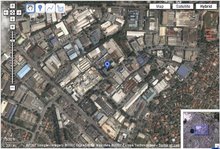Electric plugs could become things of the past after scientists devised a way of recharging laptops and mobile telephones without the need for cables.
For the first time electrical engineers have powered a light bulb from a source seven feet away without a cable using mainly magnetic waves. They believe the WiTricity technology could be developed to allow portable electronic gadgets to be charged wirelessly. It would also help the environment, dispensing with the long-term problems caused by battery disposal. Scientists have long known that transferring electric power does not require wires, but for years have struggled to find a way to make it work. A team from the Massachusetts Institute of Technology unveils its WiTricity (wireless electricity) concept today in Science Express, an online advance publication of the journal Science. The method exploits an effect close to inductance which is at work in transformers used to charge everyday appliances containing coils which transmit energy to each other by electromagnetic induction. Up to now transferring energy this way over distances of more than a few inches has been inefficient. Concerns have also been raised about a possible link between electromagnetic waves and cancer. However, Prof Marin Soljacic, who led the research, said yesterday he believed the technology can be developed without posing any additional health risks. Instead of irradiating the environment with electromagnetic waves, a power transmitter could fill the space around the power waves with a "non-radiative" electromagnetic field, he said. Energy would only be picked up by gadgets designed to "resonate" with the field. The team was able to light a 60W light bulb from a power source seven feet away; there was no physical connection between the source and the appliance, each of which contained a copper coil. The team believes an object the size of a laptop could be recharged within a few metres of a wireless power source. |
Saturday, June 9, 2007
The science behind WiTricity
Subscribe to:
Posts (Atom)



